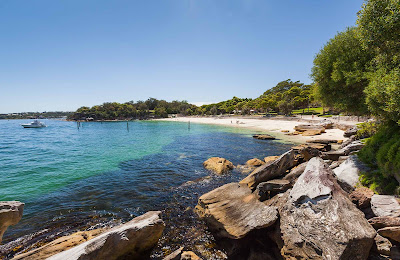The water gently ripples under the effortless strokes of an elderly gentleman’s oars as he masterfully spins his row-boat round and pulls into shore. Out from hiding at his feet a welsh corgi eagerly jumps overboard. It waddles across the sand to promptly return with a plastic Gatorade bottle clenched between a grin. The man affectionately praises the dog, taking the bottle and adding it to a half-filled garbage bag.
It’s sadly increasingly common to see or hear of plastic rubbish lining our beaches and filling our oceans, dropped or left behind after a day at the beach or carried by wind and rain into drainage networks and rivers flowing into sea.
An estimated
2.41 million tonnes of plastic enter the ocean each year, the stronger more buoyant plastics floating via converging ocean currents and accumulating in enormous islands of trash. The
Great Pacific Garbage Patch, the largest and perhaps most famous, is estimated to cover a surface area of 1.6 million square kilometres –three times the size of France – hosting conservative estimates of 1.8 trillion pieces of plastic and weighing up to 80,000 tonnes.
These harder plastics can take up to 450 years to decompose, first breaking down into smaller plastics and then persisting, not only on water surfaces but as far down as the ocean floor. Small and colourful, animals often mistake these plastics for food, resulting in malnutrition and poisoning from the plastics’ toxic chemicals.
Humans too risk being contaminated. As chemicals in plastics enter the body of the animal feeding on the plastic, they are then passed onto any predators feeding on them and then further onto higher predators up the food chain.
And it’s not only our health these plastics are threatening, but our wallets too, with environmental damage approximating 13 billion USD a year in financial losses incurred by fisheries and beach cleanups.
Unfortunately the secretive nature of Hayes Street Beach doesn’t help much to keep the rubbish out. Tucked away down the back hills of Neutral Bay, accessible through a little walk way slyly placed between two buildings, it’s easy to miss. Yet, one of the closest beaches to the CBD, a quick trip across the Harbour Bridge or ferry ride from Circular Quay, it remains unable to hide itself from rubbish deviously floating in from Sydney Harbour.
While Sydney hosts some of the cleanest beaches in the world and has improved dramatically over the last two decades,
it’s still not perfect. Last year out of 97 swimming sites tested, 17 received poor ratings for water quality. Only the tireless work of local volunteer conservationists like this man and his dog keep beautiful spots like this unspoiled.
Luckily today isn’t too bad. Within a few minutes the loosely scattered trash along the shore and shallow water has been cleared. The man throws his trash bag into the boat, gives the corgi a boost in, and clambers over after it. A few leisurely strokes and they disappear around the bay leaving a pristine space for just me and a handful of others to enjoy, reminded of our responsibility to preserve it for yet another day.
 |
| A clean Hayes St Beach |
Click here to find out how you can get involved in helping to keep Sydney Harbour clean.
Total Count: 9/160













